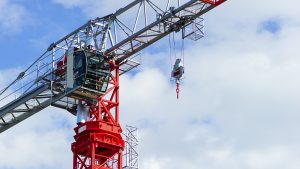Oh, the weather outside is frightful…
The cold weather in British Columbia right now isn’t just unpleasant, it’s also a safety hazard with WorkSafeBC saying it sees a spike in injuries during the frigid winter months.
“The first thing that comes to mind is cold stress injuries,” said WorkSafeBC’s Barry Nakahara, senior manager of prevention field services, in an interview with the Journal of Commerce.
“That’s things like frostbite and hypothermia, particularly if you’re working outside.”
Between 2017 and 2021 WorkSafeBC received 100 claims relating to cold stress injuries, 80 per cent of them came during November and March.
But the cold itself is just one aspect of winter’s danger.
“Snow and icy conditions. So, slips, trips and falls are also problematic in many workplaces,” said Nakahara.
But the danger of falling isn’t restricted to where an individual works.
“Even getting from your own parking lot to the front door of your workplace can be a challenge in some situations,” he said.
According to WorkSafeBC, there is an average of an 11 per cent increase in injuries caused by slips, trips and falls between November and March.
“Many of them resulting in serious injuries including fractures, sprains and dislocations,” reads a news release from the organization.
The third danger is related to vehicle operation.
“We see an increase in motor vehicle incidents during the winter as well and that can cause injuries, as we know a lot of people do drive as part of their job,” said Nakahara.
WorkSafeBC sees an 18 per cent increase in motor vehicle incidents during the winter months.
Nakahara said its important for business leaders to take these three hazards into account when the forecast predicts freezing temperatures and accumulated snow fall.
“Employers should be anticipating these conditions and assessing their work to determine what should happen.
“In the Interior right now there’s temperatures hovering around -30 C. So that really makes some outdoor work almost impossible. Many employers can make the decisions to suspend operations for a little while until things get warmed up.”
Nakahara said that while there is no legislation that forces site closures at certain low temperatures, there is legislation holding employers accountable for taking weather conditions into consideration when it comes to worker safety.
“One of the things it really considers is the wind chill factor. Because -5 C temperature might not look all that bad but if you put a 20 km/h wind on top of that it becomes quite cold and can cause frostbite and hypothermia.
“There are guidelines that accompany the regulation that help employers assess what kind of (working) time interval might be appropriate or what precautions should be taken under certain conditions. There are options other than just a ‘no go’ type of thing.”
Nakahara said construction workers, skilled trades workers and outdoor labourers are more at risk during cold snaps.
“I know there’s lots of examples of semi-enclosed workplaces like a small sawmill or something like that that’s not going to be fully heated but it’s still protected a bit from the wind,” he said.
“But outdoor work like construction jobsites in the earlier stages, forestry work, some of the utility and service work that needs to get done, particularly around this time of year those workers are working outdoors with hand tools often in pretty exposed conditions and are particularly at risk.”
Nakahara said the best defense is planning ahead.
“I always advocate to anticipate these situations before they’re happening. Anything you can do to be prepared and think ahead as to what you might be facing given the nature of the work you’re doing helps,” he said.
“For workers, have that conversation with your employers. Ask them what can be done and bring your ideas forward. That’s how safety gets solved at the workplace and, vice versa, employers should be talking to their workers about what solutions will work?”
Follow the author on twitter @JOC_Evan










Recent Comments
comments for this post are closed